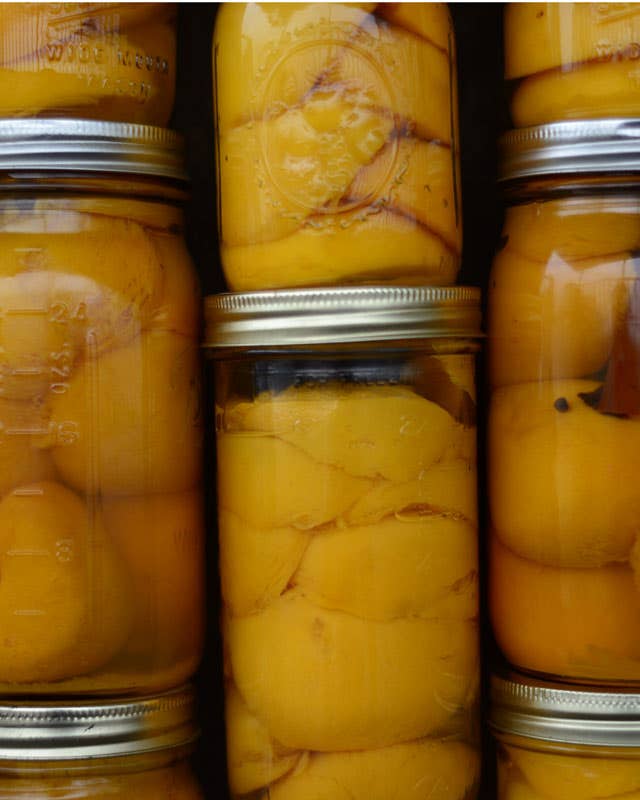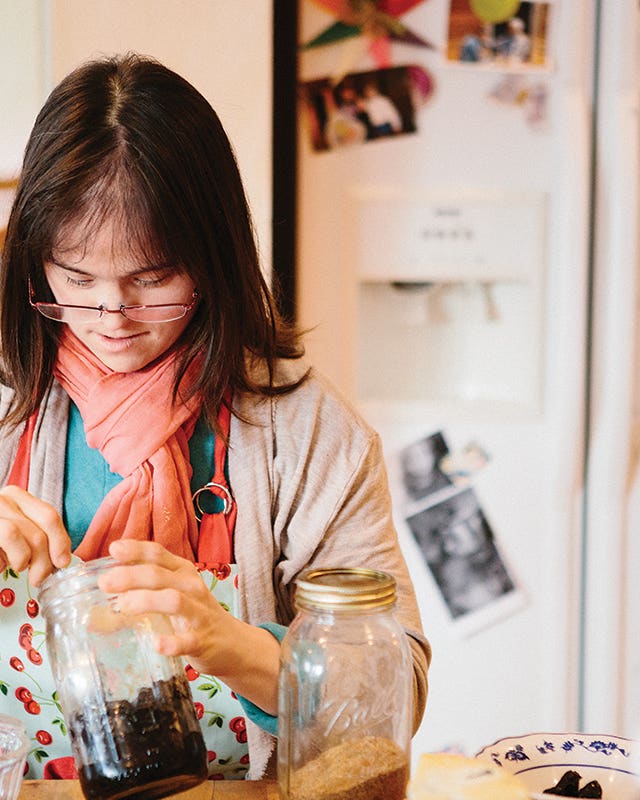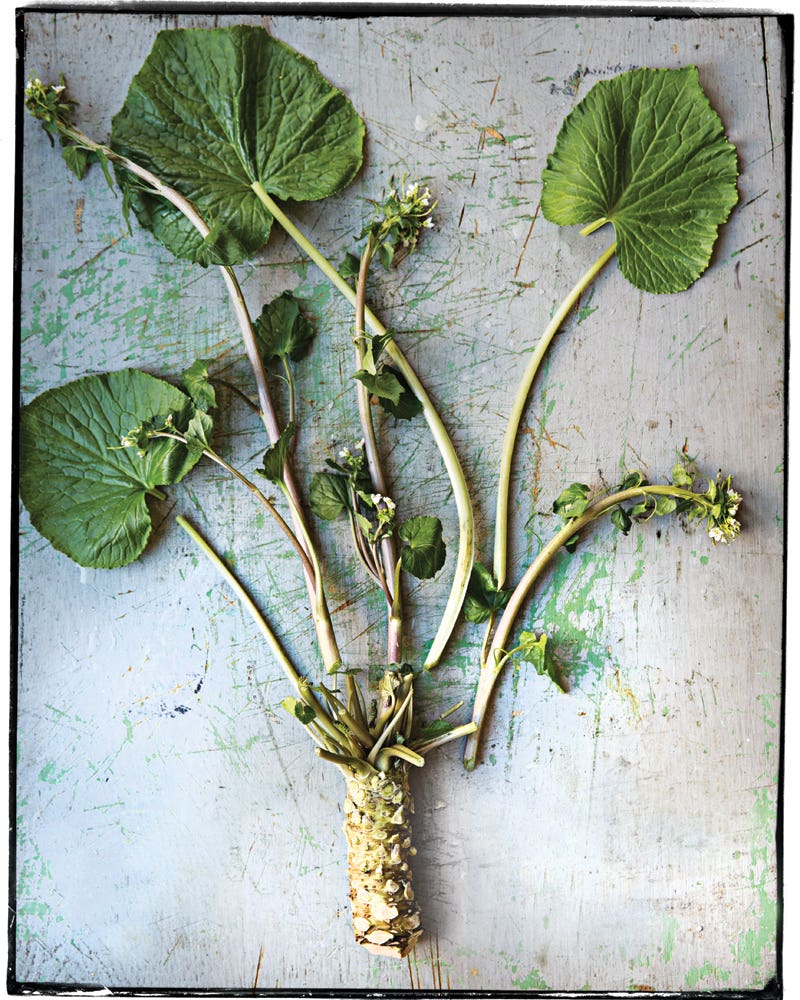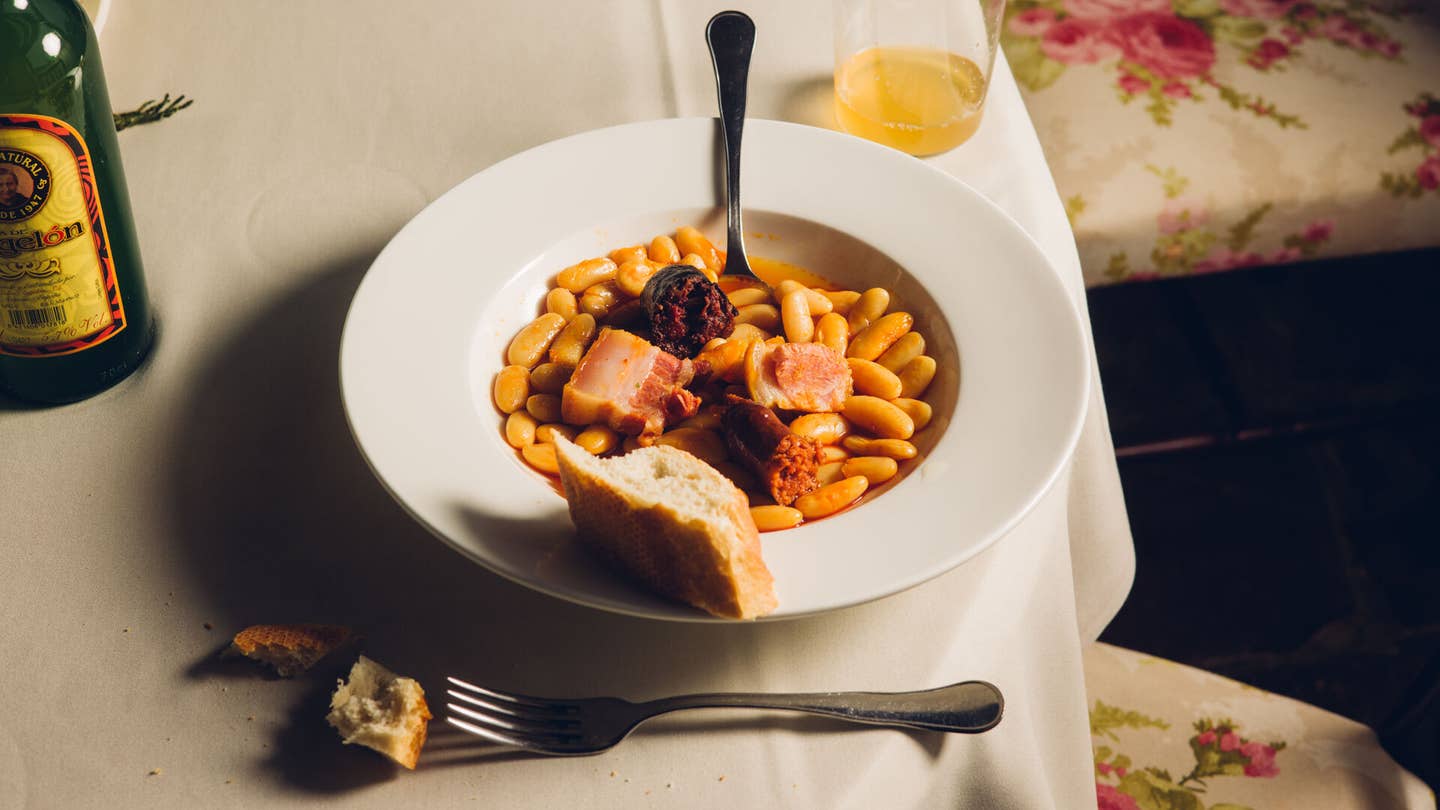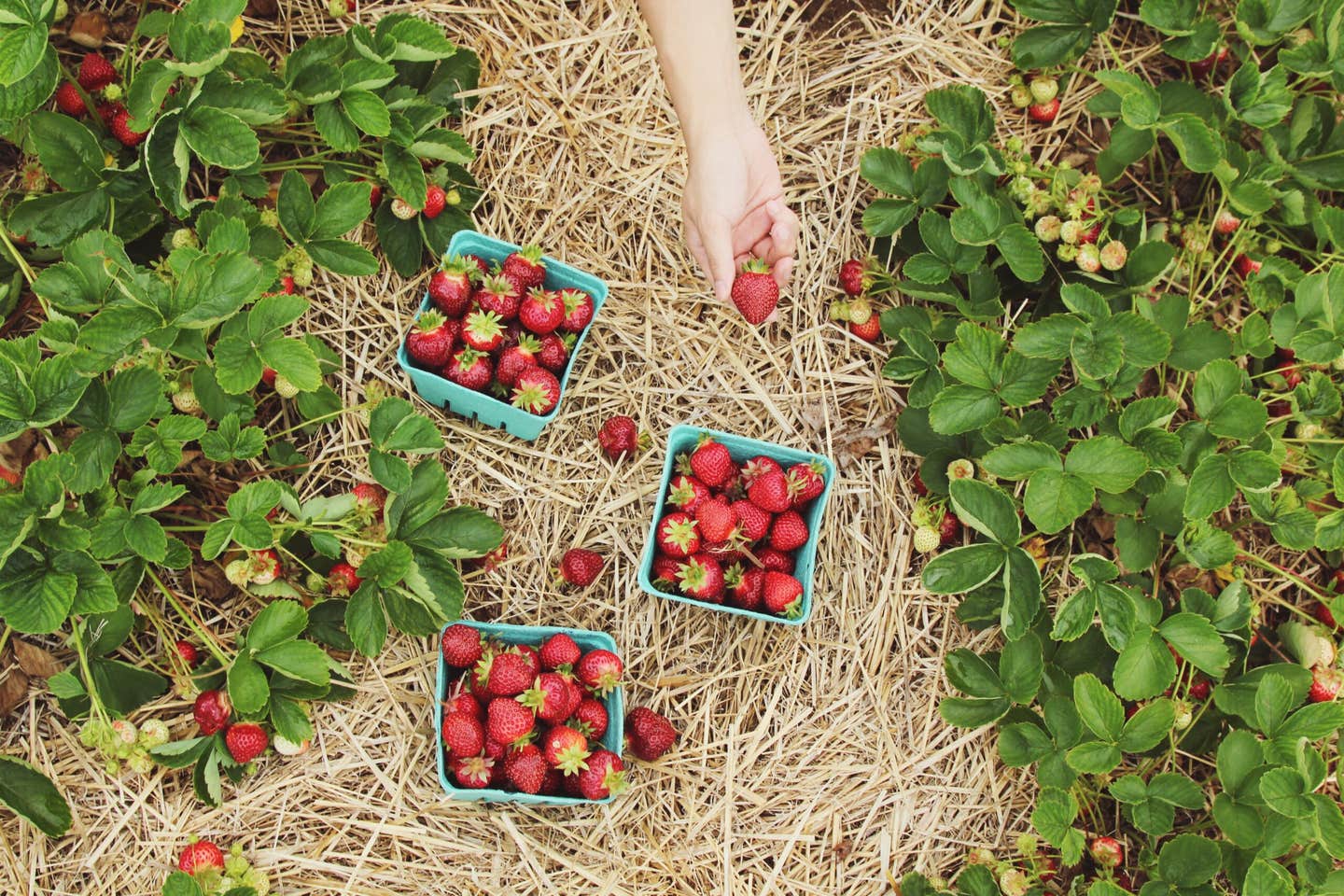
COVID-19 Challenged Farmers to Find New Customers. Here’s a Success Story.
After many in The Sunderland Farm Collaborative lost their restaurant business due to the pandemic, they banded together to stay alive. Is this a model for the future of local food?
Caroline Pam and her husband Tim Wilcox started Kitchen Garden Farm on one acre in Western Massachusetts in 2006. In the years since, the farm has grown to 50 acres as the couple converted land previously used to grow commodity crops into USDA Certified Organic fields. In addition to going organic, the couple also focused on regenerative practices like increasing biodiversity, rotating crops, and cover cropping. In 2013, they began turning some of their harvest into specialty food products made right on the farm—tomatoes into sauce, peppers into Sriracha, celery and carrots into giardiniera. But each season, at least half of the farm’s bounty was sold to local restaurants.
So back in March of 2020, when restaurants shut down due to the COVID-19 pandemic and those sales disappeared, Pam sprung into action. Knowing neighboring farms would also be facing devastating losses, she created Sunderland Farm Collaborative, an online farmers market that sells produce, meat, dairy, and bread from more than 75 producers in the region. Nearby residents, stuck at home cooking every meal in quarantine, began placing orders for pick-up and delivery almost immediately. “Initially, we were so overwhelmed with the demand that we would have to shut down the order period within a few hours of opening, because we reached the capacity of what we could deliver and accommodate,” Pam explained.
Kitchen Garden Farms wasn’t in a unique situation. Small farms all over the country, with crops in the ground, watched sales from restaurants, institutions, and (in some cases) farmers markets dry up as the country went into quarantine. But for farmers like those in the Sunderland Collective, the situation turned quickly from famine to feast.
As supermarkets struggled to keep shelves stocked, people drove to nearby farm stands and joined CSAs for the first time. Nimble producers—like Pam’s Sunderland Farm Collaborative—were uniquely positioned to step up to the plate. “One thing that did emerge pretty quickly was a recognition of the importance of our local food systems and a reinvigoration of people's interest in purchasing food locally,” said Anu Rangarajan, the director of Cornell University’s Small Farms Program, which primarily works with New York farms.
Fast forward a year and Pam is selling their farm-grown packaged goods three times faster than last year. And she was able to keep 20 people working on the farm full-time through the winter, compared to the six she kept on last winter, pre-COVID-19. Now Pam, like so many other small-scale farmers, is asking: How do we take this momentum and run with it?
Pivoting to Meet Early Demand
Last summer, the Carolina Stewardship Association found that 87 percent of surveyed small- and medium-sized farms in North and South Carolina experienced decreases in restaurant sales in the early days of the pandemic. On the flip side, sales increased in two realms: 51 percent of farms reported an uptick in direct-to-consumer sales (like online ordering and farm stands), and 66 percent reported increases in Community Supported Agriculture (CSA) sales. Many farms that sold mainly to restaurants and institutions before the pandemic switched to a CSA model—which involves customers purchasing weekly vegetable shares, usually for a season—and sold out their shares immediately. Farms that offered both direct purchase and CSAs scrambled to move their sales online and to provide contactless pick-up and home delivery. Those that did generally saw early success.
Queen’s Greens is less than five miles away from Kitchen Garden Farm. Before the pandemic, farmer Danya Teitelbaum was selling about 900 pounds of greens per week to colleges and restaurants. Those customers vanished overnight, but Teitelbaum was able to replace nearly all of the volume with online sales through the Sunderland Farm Collaborative.
Online grocers that focus on working with small farms also saw increased interest. Farmstead is a Bay Area grocery delivery company that typically sources about 60 percent of its meat, dairy, and produce from local farms. When San Francisco public health officials first issued a shelter-in-place directive, order volume jumped to ten times what it was before the order. Demand was so high that some of Farmstead’s small farm suppliers ran out of food, says Jamie Feuerman, the grocery service’s head of merchandising. On the flip side, many were able to meet the increased demand even better than larger farms—as the biggest meatpacking plants closed due to COVID-19 outbreaks, for example, Farmstead’s meat supply was uninterrupted. “The one area where we never had a problem was meat,” she said. “We don’t buy commodity meats. Instead, we go to small farms...and we took all the meat they could give us.”
Increased Demand Increases Challenges and Expenses
The uptick in demand for grass-fed beef and pastured pork and chicken revealed one of the first big barriers facing small farms: a lack of capacity to process the animals. A Cornell Small Farms survey on slaughterhouse access showed 80 percent of New York farmers experienced increased demand, and 80 percent of them couldn’t get all of their animals processed.
In Iowa, Wendy Johnson raises pigs, chickens, and sheep on pasture at Jóia Food Farm and sells her meat and eggs directly to local residents via a CSA and an online farm store. She welcomed many new customers during the pandemic and is now slowly increasing her herd and flock sizes for the current season. But processors in her area are booked through 2021 and haven’t yet opened their calendars for 2022. “I emailed my requests, but I’m sure they have another pile of requests,” Johnson said. “It feels a little unnerving, because we rely so much on processors. It’s a little scary to not have control.”
In addition to processing challenges, many small farms have accrued all kinds of additional expenses while adapting to operating during COVID-19, including increased labor and vehicle costs involved in making deliveries, purchasing PPE for employees and packaging for their wares, and setting up online sales and logistics. That means that even though demand has increased in some cases, the combination of other sales channels lost, higher costs, and already slim margins means many farms are still struggling.
Those that are doing the best had some advantages already in place when the initial shock of COVID-19 occurred. For example: Pam was able to set up Sunderland Farm Collaborative so quickly because Kitchen Garden Farm was already set up on an online platform.
Farms that worked together during the upheaval also were able to tackle financial and logistical challenges more effectively. Pam invested in a new cooler and refrigerated vans for the Collaborative, and she’s building a new barn and warehouse—all costs that will be spread across the group. “For all of us to independently have to figure out our own websites and our own delivery mechanisms and staffing and processing and all of that, it’s just a lot more work,” she said.
Planning and Solving for the Future
Pam and Wilcox are forging ahead. The 2021 season is based on what they’ve learned since the pandemic started. For example, the farmers are looking for ways to grow more peppers and tomatoes for their salsas during the short season that those crops thrive.
Pam is also turning her attention to equity in her local foodshed. “We're actively looking to find new ways to make our food accessible in lower income communities in our area,” she said. Sunderland Farm Collaborative has been accepting SNAP benefits for months, but Pam is looking to partner with community organizations to get the word out and do more.
This is all an example of how the events of the past year have led to “a real uptick in commitment to deal with the disruptions in the food system we observed because of Covid,” as Rangarajan puts it.
Those solutions can’t come soon enough for Johnson, who also feels optimistic about incremental growth on her farm thanks to a new group of customers with whom she can continuously engage. “We have this whole new audience that we can tell our stories to, and some have stuck with us. They didn’t go back to their normal [pre-Covid] buying modes,” she explained.
And no matter what happens, these farmers have renewed confidence in their own creativity and resilience. “I knew [creating the collaborative] was going to be a crazy amount of work, and I decided I didn't want to take it on if I didn't think it had a future,” Pam said. “Now, our experience of being able to successfully switch gears and change our systems in order to meet the demand where it was [has shown me that] even if things shift again, we have the means to respond.”
Keep Reading
Continue to Next Story
